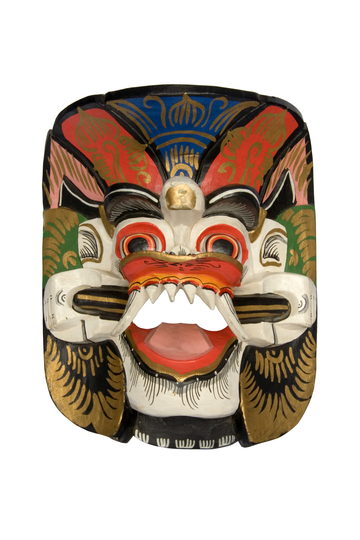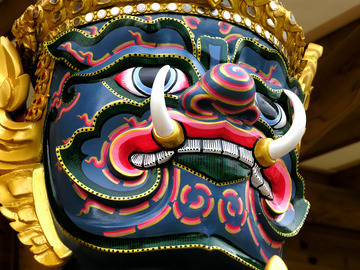Lion's Protective Face
We asked our master buildeer, Selvanathan Sthapati, to explain the faces on Iraivan. Here is his response, received today from India: With regard to swami's question of Mahanaasi / kirtimukha – the difference in this two terms is as follows; Mahanasi means a big(maha) nose(naasi).This architectural form is seen on the gopuras and the vimanas. The shape is based on the face of lion and it is believed in tradition that this terrifying naasi form observes all the bad omen/evil things in and around the temple premises. This is the main reason that this form is created on the vimanas and gopuram.

These protective faces are common throughout the Hindu world.
Kirtimukha means Face of Glory or Fame. It is a hip ornamental feature seen on the dress of the gods and goddesses. This feature is based on the lion face with highly rich ornamentation.
There are dozens of these Mahanaasi on Iraivan temple.

In Bali, Hindus make special masks that are fearsome to the asuras and delightful to the devas.

What right-thinking asura would get near these three?
These are another ornamental feature that decorate the walls of the temples.
In fact, everywhere you look in Iraivan you see this.
You can hear these mahanaasi roar. Look closely, that is their roar artistically flowing from the mouth.
The small ones (as per swami's photos) are the chutra nasis (small nasikoodus) meaning a form with the outline of Mahanaasi but without lion face.
May all be protected by dharma. May all be protected by their good karma. May all be protected from harm.
One Response to “Lion's Protective Face”
From Our Gurus' Teachings
Archives are now available through 2001. Light colored days have no posts. 1998-2001 coming later.

July 14th, 2009 at 7:34 am
Really helpful this approach!!!